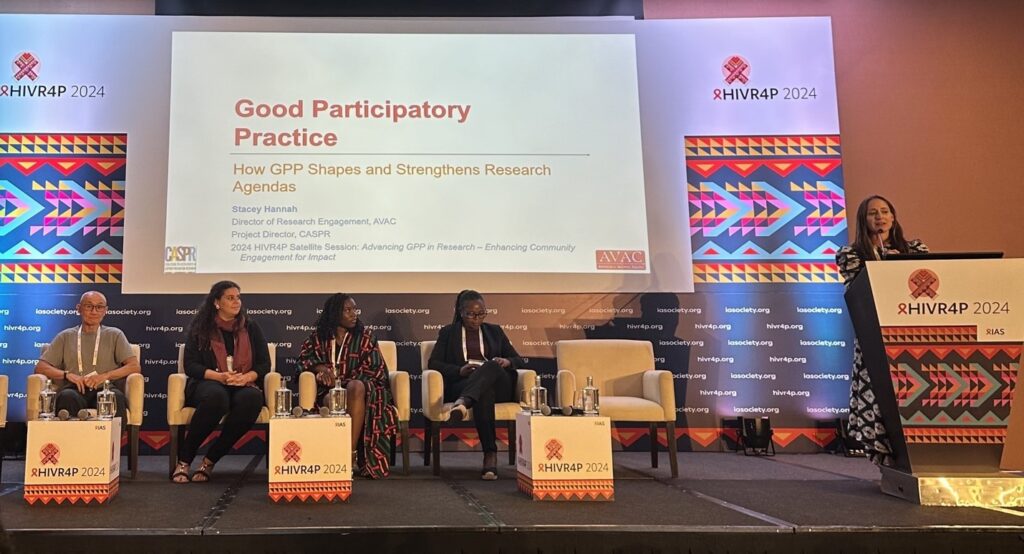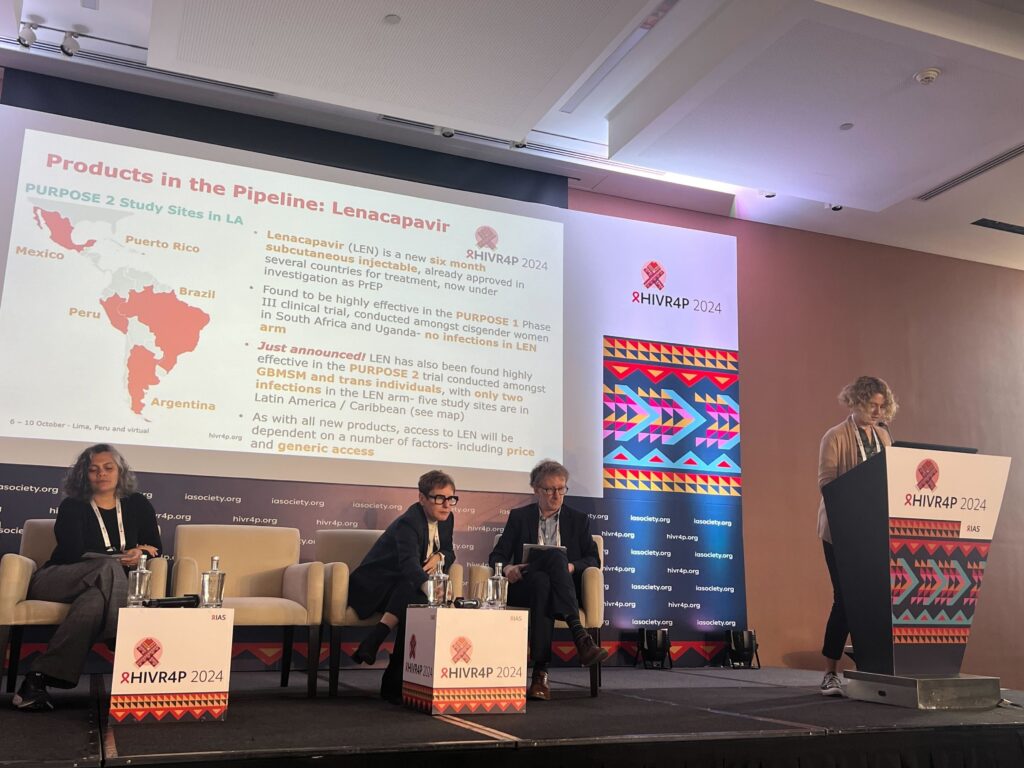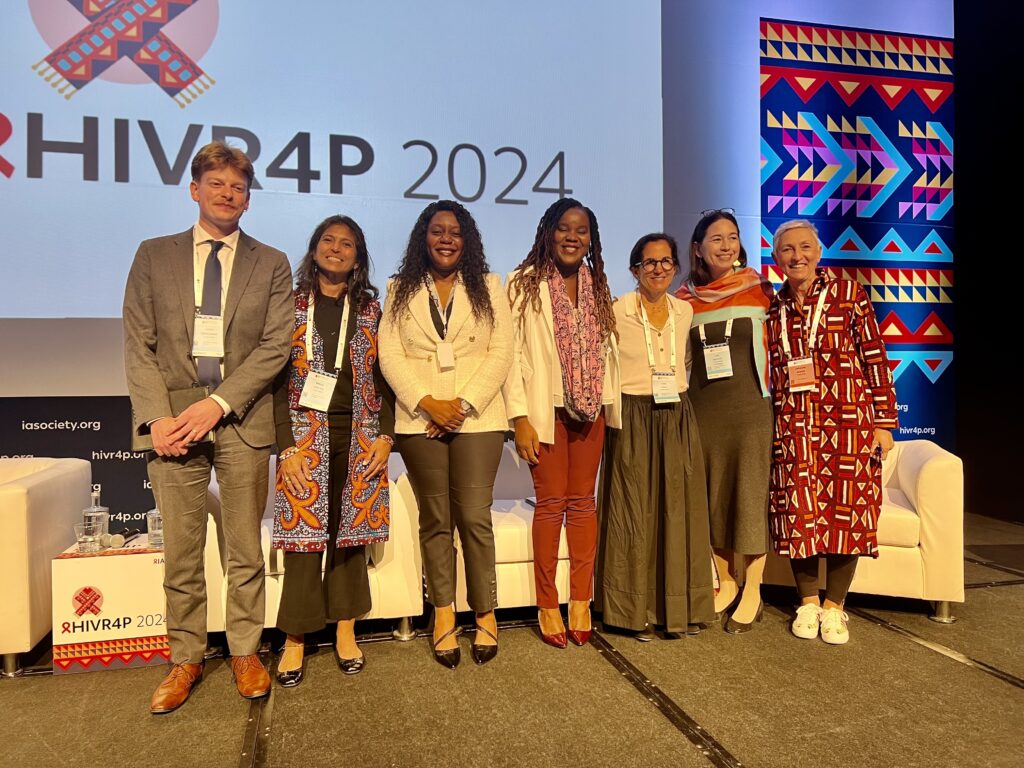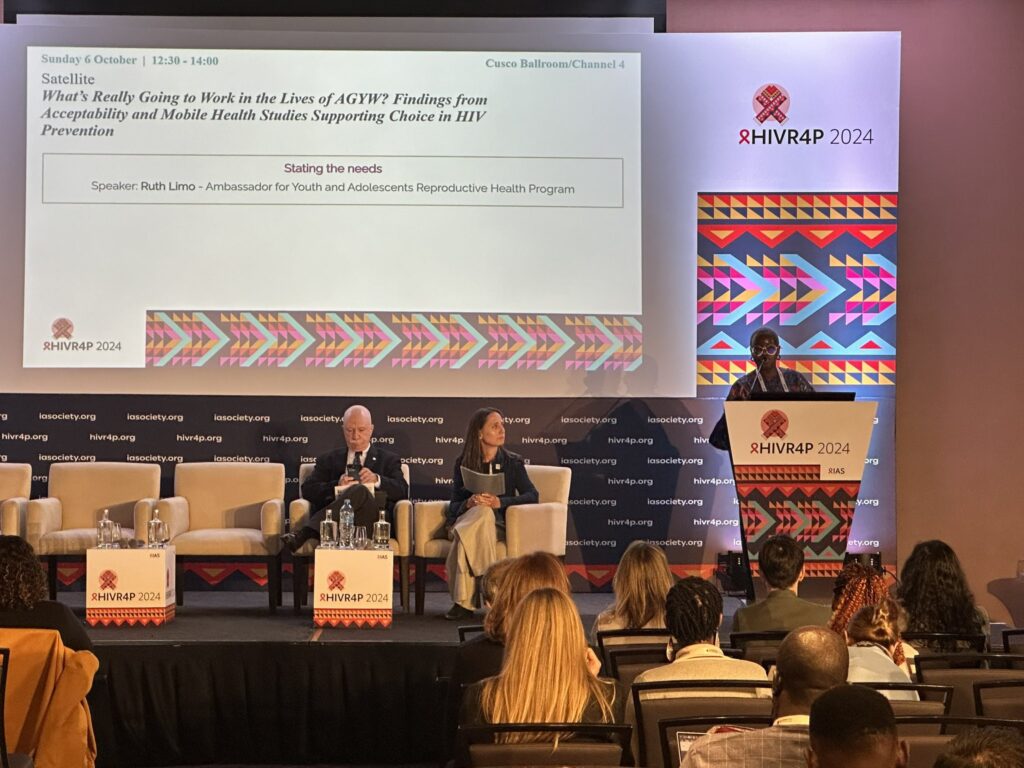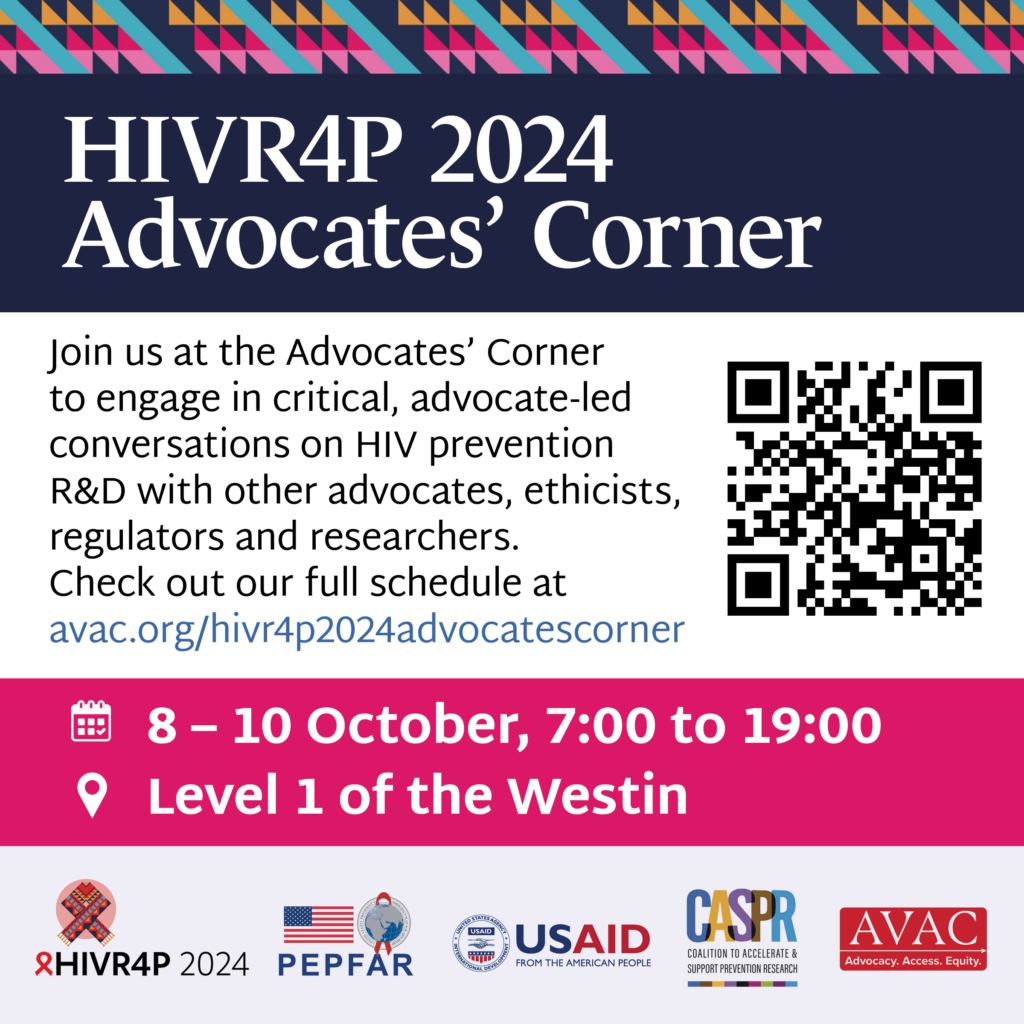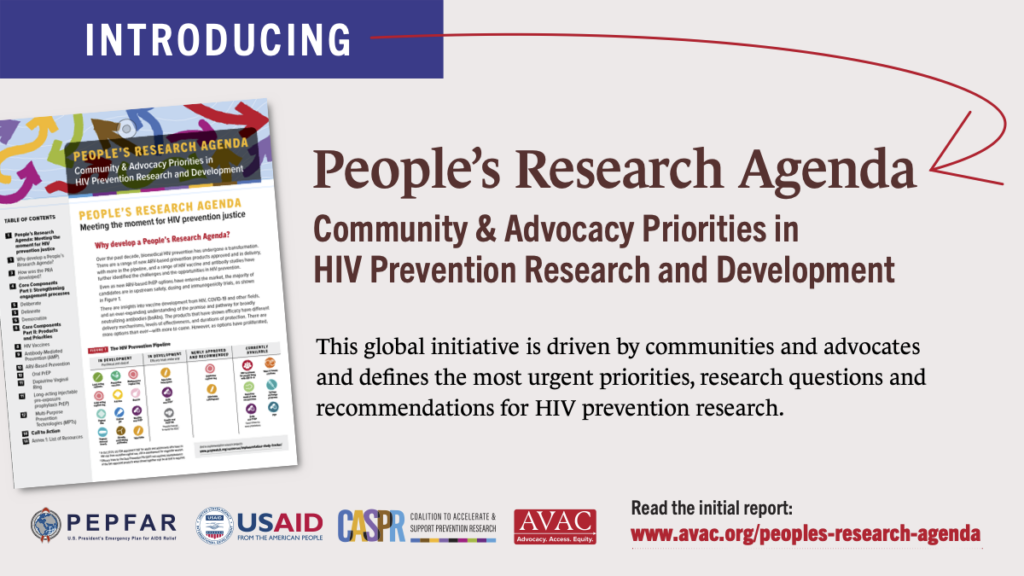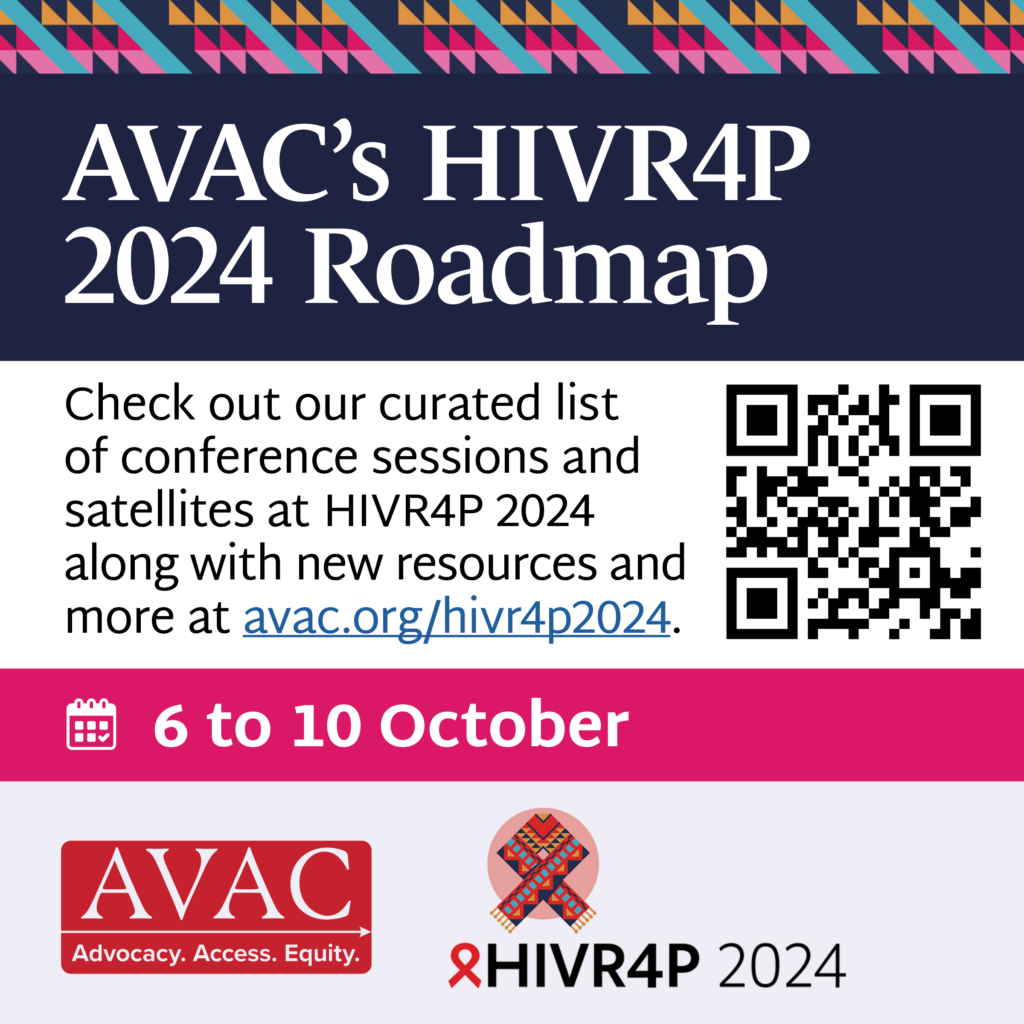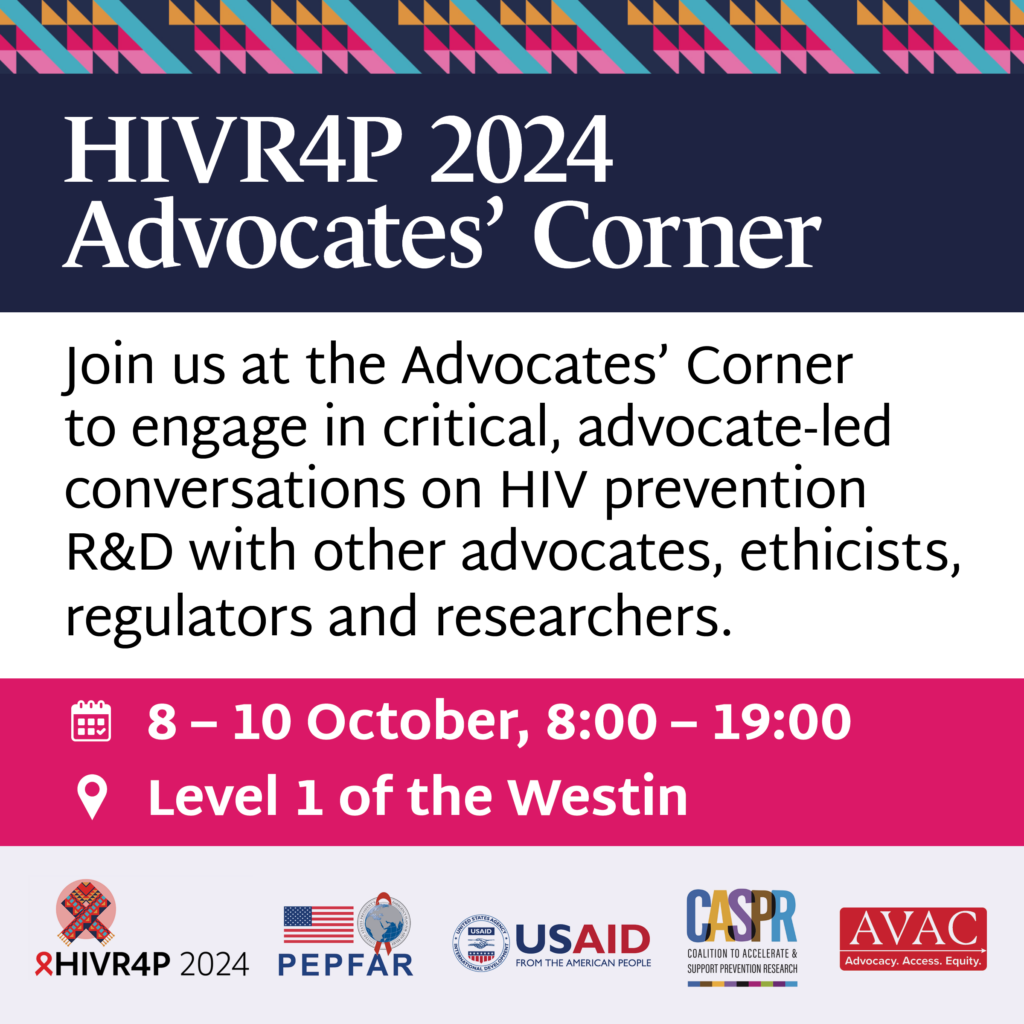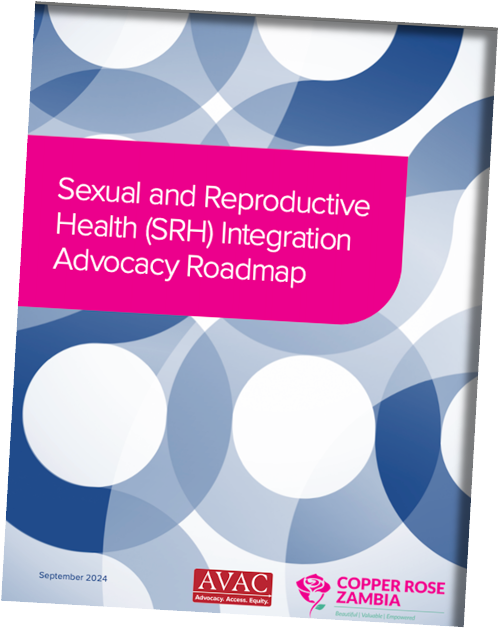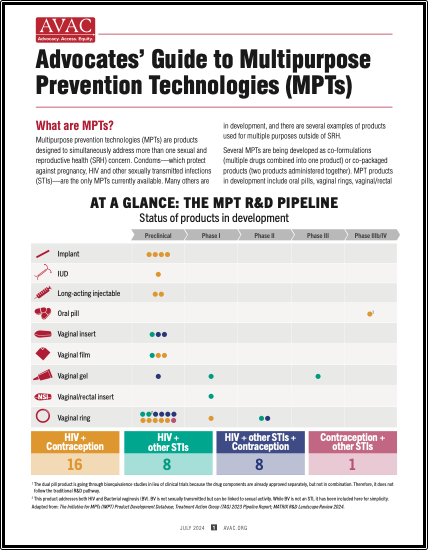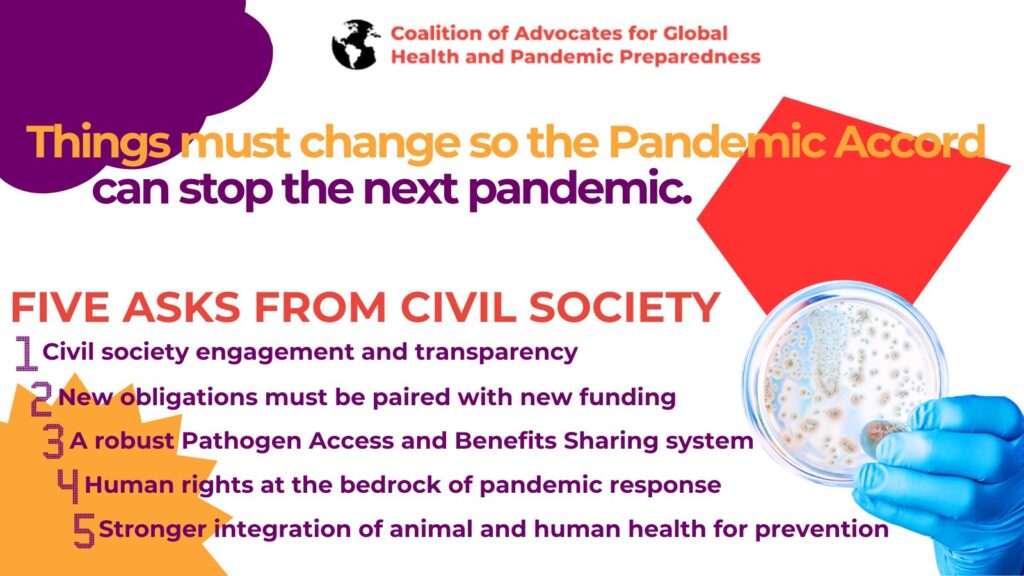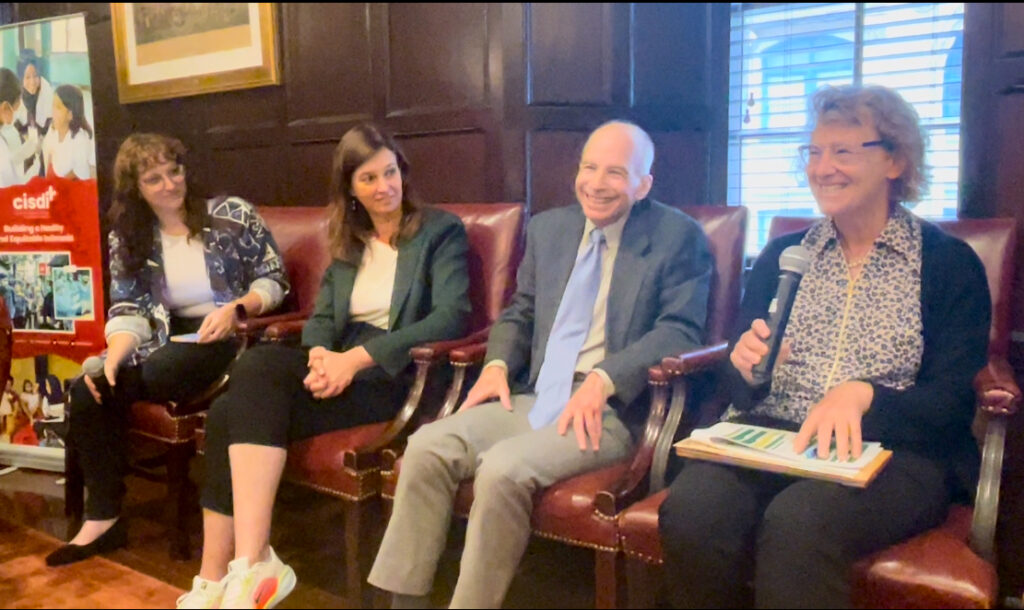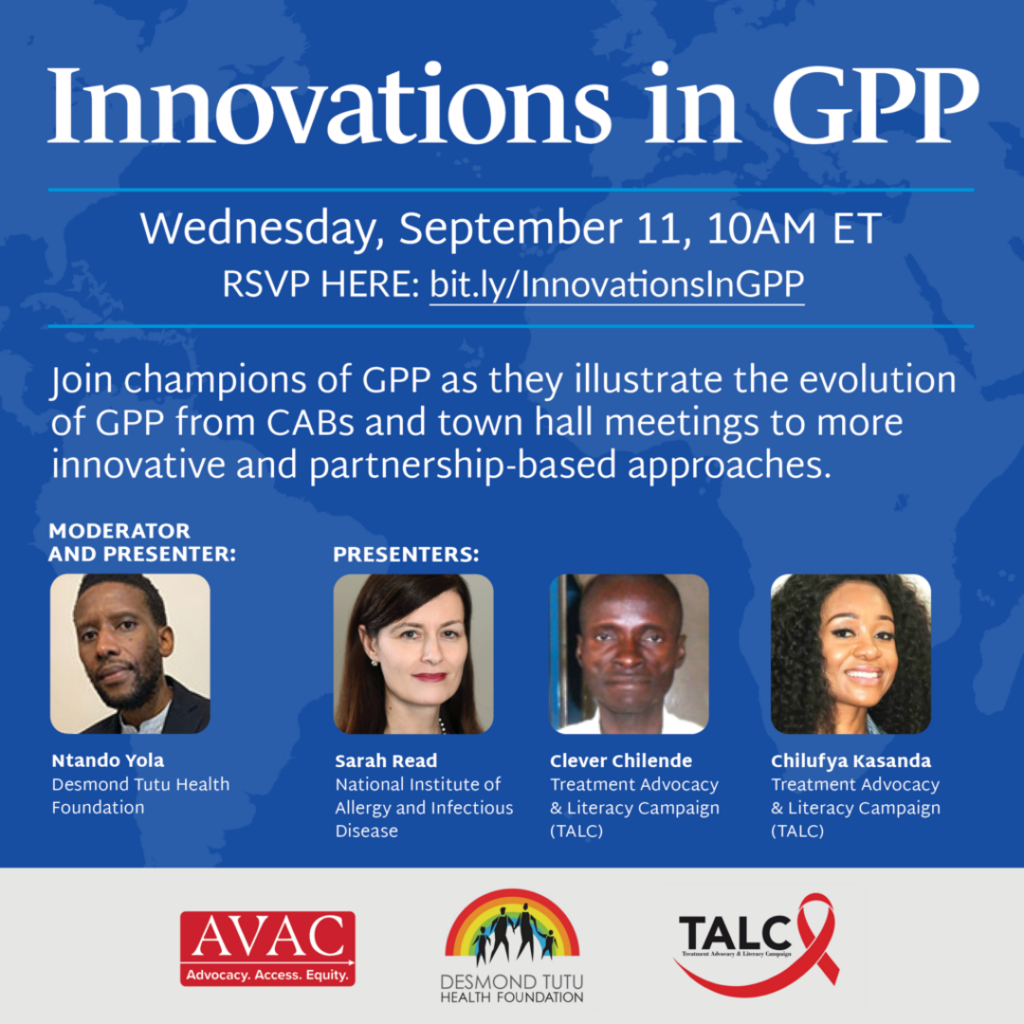On the final day of HIVR4P 2024, we saw a focus on how to center communities from a number of angles—from the role of artificial intelligence in HIV prevention and details from a study on PrEP choices among African women to a manifesto for the inclusion of trans communities and a journalism initiative to translate HIV science into African languages.
Read on for details!
The high stakes of inclusion
Key sessions highlighted the importance of ensuring equitable access to prevention tools for transgender and gender-diverse individuals (TGD), as well as addressing the policy and legal barriers that hinder care, particularly in countries with anti-LGBTQI+ legislation.
“Trans people are giving our blood, our bodies, our time to clinical trials, and we need to make sure that findings from clinical trials—the right to science—the right to benefit from science comes back to us when we participate,” said Brian Minalga at the session, Policy and legal barriers to HIV services. Minalga pointed to the No Data No More manifesto and scorecard tool, resources for envisioning, designing, and grading clinical trials for meaningful trans and gender-diverse inclusivity. The scorecard uses 13 indicators to assess the inclusion of TGD people in clinical trials. The scorecard assessment found that prior to the IMPOWER and PURPOSE trials, TGD individuals made up less than 1% of HIV prevention studies.
Adding to the conversation, Sara Melillo of USAID in Uganda discussed the adverse impact of Uganda’s 2023 Anti-Homosexuality Act (AHA), which has resulted in evictions, forced relocations, and a 60% drop in HIV services, though some services have since recovered. Read more from the updated report, Unwanted, Outlawed and Illegal: The cry from LGBTIQ+ Ugandans from Convening for Equality (CFE), and advocacy from LGBTQ+ Ugandans, AIDS activists and supporters during the recent UNGA meeting urging the World Bank to withhold lending to Uganda until the AHA is repealed.
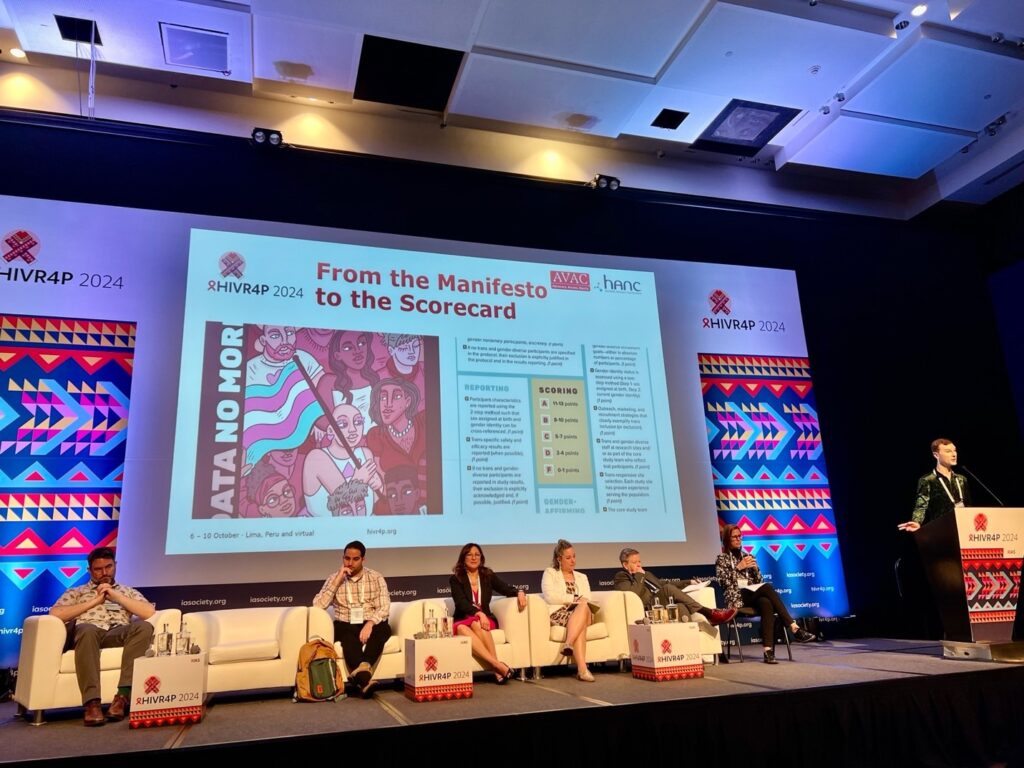
AI’s role in HIV prevention services
Artificial intelligence (AI) in HIV prevention is just beginning to unfold. Maaya Sundaram of the Gates Foundation explored this in the session, The Digital Revolution and HIV Prevention: Social Media, Artificial Intelligence and Machine Learning, showcasing AI’s impact on drug discovery, PrEP delivery and on patient and provider support. Sundaram spoke to a 2023 study demonstrating that AI can provide high-quality, empathetic responses to patient questions and concerns, but was also clear that humans still need to be actively involved where AI is used, ensuring quality and accuracy of the AI responses to questions, and making sure the information they’re providing to patients is up-to-date. She reported that AI can use a predictive model to provide population-level insights such as how to support people who have fallen out of care, and highlighted its benefits in streamlining administrative tasks such as data entry.
But even with these benefits, data security and privacy protection must be ensured for trial participants, patients and program clients, particularly for key populations seeking care in highly stigmatized and/or criminalized environments. Sundaram stressed the need for data from programs all over the world, not just the US and Western Europe, for AI tools to be culturally appropriate for all contexts. Beyond this, delegates cautioned the panel about the potential environmental impacts of AI noting that it’s a space advocates are watching.
Delivering on the promise of PrEP choice
If you didn’t hear the word “choice” this week, you probably missed the HIVR4P 2024 conference! The session Delivering on the Promise of PrEP Choice shared data and perspectives from health providers and clients across Africa. Elizabeth Irungu of Jhpiego presented initial findings from the MOSAIC project’s CATALYST study among women in five African countries on the factors driving their selection of either oral PrEP or the PrEP ring. Both options were seen as “easy to use” (59% for oral PrEP, 57% for the PrEP ring), but oral PrEP users felt more “protected” (32%), while PrEP ring users appreciated not having to swallow pills (53%). Despite initial challenges in offering choice, provider training and sensitization helped overcome these barriers. (CATALYST is now adding injectable cabotegravir, so future data will look at choices across three options). Nicolette Naidoo from Wits RHI in South Africa shared data showing that while oral PrEP remained the dominant choice (69%), there was moderate uptake of the PrEP ring (27%). The key takeaway: When given the option, people choose what best suits their needs.

At a parallel session, PrEP in pregnancy and lactation, Ashley Mayo of FHI360 and the former Microbicide Trials Network (MTN) shared new data on the PrEP ring, emphasizing the need for more prevention options for pregnant and lactating individuals. She showed new data from the open label extension of the ASPIRE Phase 3 trial, MTN-025, testing the PrEP ring during preconception and early pregnancy. The results were “very similar to pregnancy outcomes observed in ASPIRE” with no differences in adverse pregnancy outcomes. These data “add to the growing evidence that the dapivirine ring may be safe to use throughout pregnancy,” she said.
Science journalism in local languages can make the difference
Groundbreaking science cannot fulfill its promise unless impacted communities are leading the discussion about its benefits, implications and priorities—it’s imperative for affected communities to be able to advocate for their own needs.
In a rare presentation by a journalist at a scientific conference, Esther Nakkazi, a Ugandan journalist and member of the AVAC-supported Media Science Café program, shared how journalists help shape public opinion, understanding of science and the issues involved in research, the regulatory process and access to prevention and treatment. Writing or speaking in local languages enhances the accuracy and impact of scientific storytelling, makes scientific knowledge more accessible and relevant to diverse communities and helps bridge the gap and deepens trust between communities, scientists and journalists.
“Using local languages in media science cafes is key to effective communication and audience engagement, especially in Africa where community radio is the primary medium,” said Nakkazi. “This approach broadens access to scientific information, particularly in regions where broadcasts are exclusively in local languages, ensuring complex concepts are understood and promoting clearer understanding of science across diverse communities.”
At the session, Driving PrEP Implementation Through Community Engaged Science, Nakkazi also shared the Translation Index, a resource for journalists that translates medical and scientific terms into 10 African languages, supporting journalists from those regions to communicate scientific findings in the most accessible terms. Media Cafe attendees meet monthly with researchers and other experts on key areas of HIV policy and science or to discuss new research findings. Learn more.
Realizing the promise
From the streets of Lima to the stage of the final plenary session, Realizing the Promise, Leyla Huerta of Féminas Perú called for meaningful engagement of trans communities and investment in HIV prevention research and programs that prioritizes their health and wellbeing: “We demand that research includes authentic community components, that stops instrumentalizing transgender women and does not use us as a convenient resource.”
Sharon Lewin, the past International AIDS Society (IAS) president and current director of Peter Doherty Institute for Infection and Immunity, concluded the conference by sharing how research on HIV cure can help inform HIV prevention (and vice versa), and called for advocacy to sustain support for experimental medicine across all research domains, reinforcing the key messages of the People’s Research Agenda that was launched at the beginning of the conference. “I want to end by reminding people that antiretrovirals alone will not see the end of an HIV pandemic. We need a vaccine, we need a cure, and we can’t be deterred by the complexity of both challenges.”
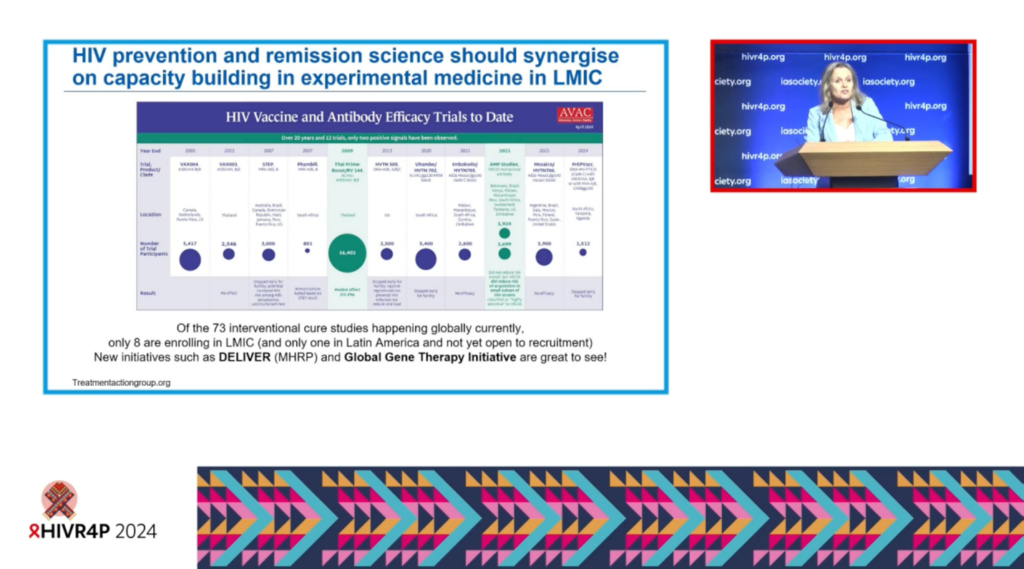
There is a lot to take away from HIVR4P 2024—and stay tuned for further analyses and reflections. But it’s about what the entire field does after this conference—and how we do it—that really matters.
So, let’s get to work.







